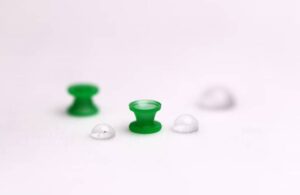
These TTs create an opening between the ear canal and middle ear. Their aim is to ventilate the middle ear, provide a route for fluid to drain out and allow antibiotic drops to reach infection-causing bacteria. However, the researchers say these small, hollow, cylindrical devices made of plastic or metal function “far from perfectly.”
Bacteria may lay down biofilms and local tissue can grow on the surfaces, blocking TTs’ lumen, causing them to extrude. Additionally, antibiotic ear drops may not effectively reach the site of infection. The researchers say these problems also plague other fluid-transporting implantable medical conduits (IMCs). These include catheters, shunts, and various small tubes with use in the brain, liver, eyes, and other organs.
Finding a way to effectively treat ear infections
The multi-disciplinary research collaboration came out of the Wyss Institute for Biologically Inspired Engineering at Harvard University, Harvard John A. Paulson School of Engineering and Applied Sciences (SEAS), and Massachusetts Eye and Ear (MEE) in Boston. They created a complete design overhaul for IMCs with a broadly applicable strategy. The approach enables IMCs with predictable and effective uni- and bi-directional fluid transport at the millimeter scale that resist various contaminations.
Using TTs fabricated from a liquid-infused material — called iTTs — the team co-optimized difficult-to-reconcile functions. These include fast drug delivery into and drainage of fluids out of the middle ear, resistance against water crossing from the outside into the middle ear, as well as the prevention of bacterial and cell adhesion to tubes. The findings are published in the recent cover article of Science Translational Medicine.
Get the full story at our sister site, Medical Design & Outsourcing.

